Introduction
After reaching timeless Simple in March of 2020, I decided to try out The Quick and the Dead (Q&D), while maintaining sport-specific training on the pushup which is part of my military testing. Pleased with the results of Q&D, I decided to continue with the program, but I had a problem. The book suggests that after the first twelve weeks of Q&D to alternate six weeks of alactic plus aerobic (A+A) training with six weeks of Q&D.
Being unfamiliar with A+A, I researched and found some clarity. Pavel explains it as “five high power swings or snatches on the minute.” Verkhoshansky defined it as “10-15 seconds of hard work followed by 45-60 seconds of rest.” And Geoff Neupert, former StrongFirst Certified Master Instructor, suggested one to three reps of double kettlebell drills in an article discussing his Kettlebell STRONG program and A+A research. In experimenting with various exercises and parameters, I found Pavel’s three to five reps worked well with single kettlebell swings or snatches but were too tiring and long with the double kettlebell clean and jerk (C&J) for an effective A+A practice session.
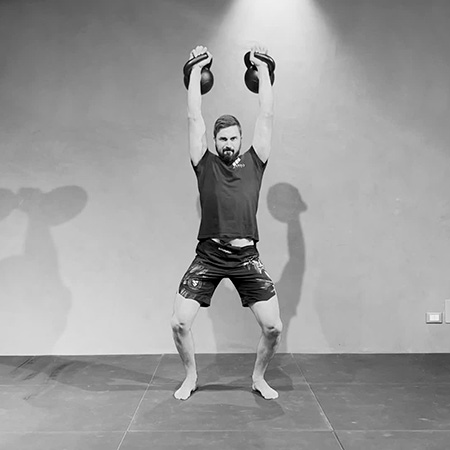
One to three double kettlebell clean and jerks take about ten to fifteen seconds, depending on the difficulty of the weight and how much time is needed in between the clean and the jerk. So, for this plan, that is based on the double clean and jerk, the loading parameter is fifteen seconds of work and forty-five seconds of rest, which is between one and three double clean and jerks every minute, depending on what you have available.
After almost a year of experimentation, I would like to share the results of my idea with the StrongFirst community for your own use, or as a springboard for your own creativity. This program is the one I enjoyed the most and that I felt was easiest to follow given my busy schedule, available kettlebells, and my enjoyment of the double kettlebell clean and jerk. Of course, the ideal option is attending a StrongFirst Certification or Workshop for the best training and resources, but this may help on your, and my, journey there.
The Plan
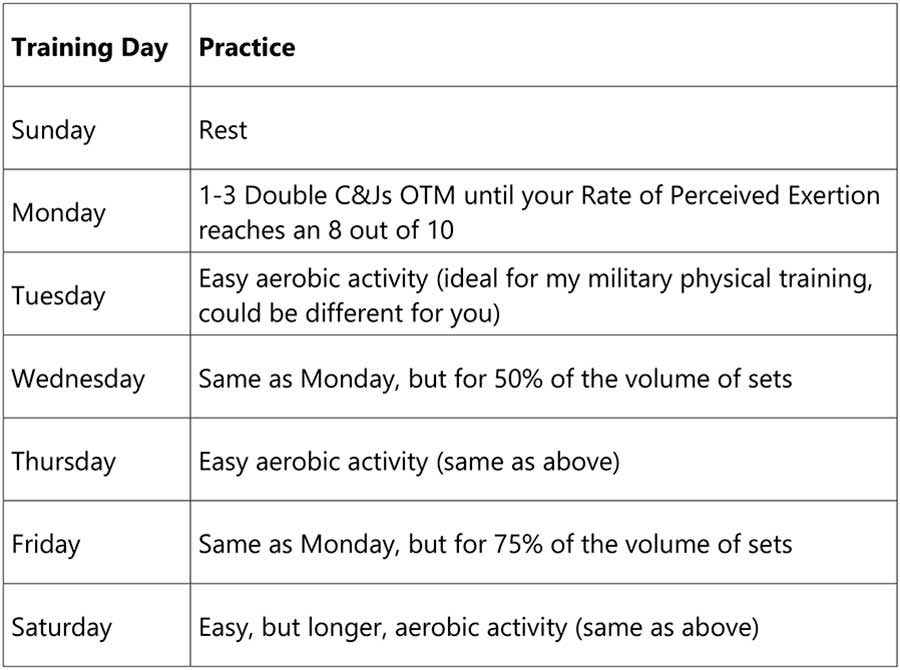
Guidelines
After your preferred type of warmup pick a double kettlebell C&J weight that is comfortably to moderately hard. Ideally, pick a weight equal to your 5RM (rep max). If your selection is limited, go lighter rather than heavier (for example, your 8RM instead of your 3RM).
Pick the reps, one to three, based on your ability to perform the double C&J in fifteen seconds: you may be able to do three reps in fifteen seconds with a comfortably hard weight, but only one rep in ten seconds with a moderately hard weight. If you have your 5RM, I recommend starting with two reps per set. If all you have is a 3RM weight, start with one rep. If you only have a lighter weight, do no more than three reps, which should place you at fifteen seconds.
Once you pick an appropriate weight and rep scheme, your first Monday session should be about ten minutes of double C&J (less and you probably picked too heavy a weight; significantly more, probably a weight that is not challenging enough). You should be able to breathe in and out through your nose the whole time.
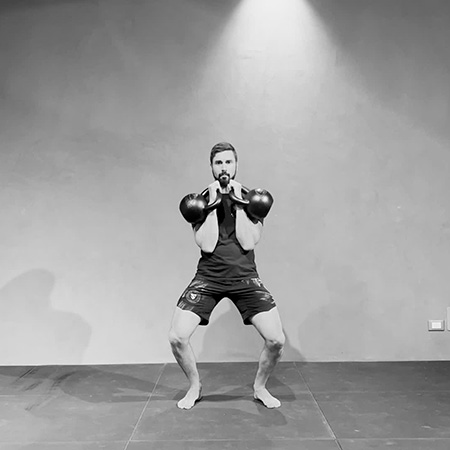
Every Monday, see how many sets you can do, using proper technique while minding the StrongFirst stop signs:
- Rep speed slows
- Tempo drops
- Technique changes
- Rate of perceived exertion (RPE) exceeds 8 on the 1-10 scale
- Gasping for breath or breathing pattern changes
Barring the appearance of any stop signs, you should be able to increase your sets every Monday.
When you get to thirty minutes with one or two reps, add a rep to your sets the next Monday and see how many sets you can do with the extra rep. When you can do thirty minutes of three reps per set, begin again with a heavier weight, or continue with the current weight to solidify your gains for the rest of the cycle.
If one Monday you have to stop with fewer sets than before, don’t sweat it, just go with the reduced volume the whole week, and it will act as a deload week. Then re-evaluate the next Monday as usual.
Follow this for six to eight weeks. For long-term programming, you can consider alternating this with cycles of Q&D.
Kettlebells StrongFirst—
Behold the power of A+A
Programming Considerations
I designed this program for myself as an A+A cycle that I alternate with Q&D six-week cycles. Minimalism was a big consideration in choosing the double C&J as the only exercise. I chose the double C&J as an overall power exercise to complement Q&D, and I wanted to get better at it. I have a busy job and family, so time is precious. Besides easy on the clock, I wanted something easy on the mind: less thought than Q&D, less pre-planning than Plan StrongTM or other strictly managed program, and maximum all-around benefits given the limited time and exercises. I chose the goblet squat, and its prying cousin, for hip mobility. I chose the get-up for shoulder mobility, as well as to stay proficient in my Simple and Sinister get-up of 40kg.
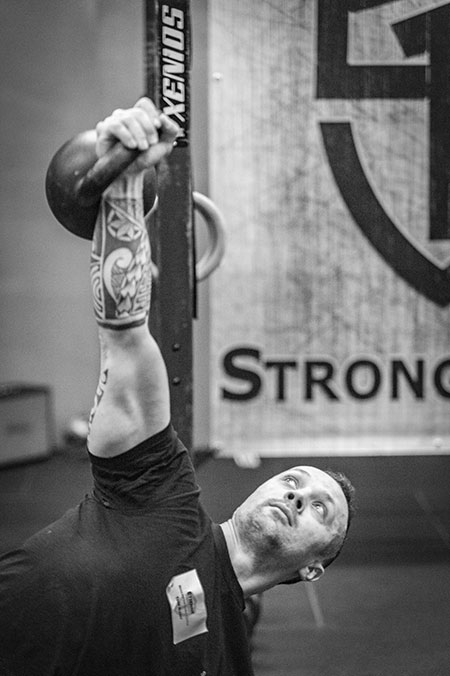
This could be a standalone program. I ran on Tuesdays and Thursdays. I did a short but heavy ruck on Saturdays. Walk, run, swim, cycle, hike, whatever you prefer. Just keep it relatively easy.
This program can be a good way to take a break from Simple and Sinister, while minimizing losses in the specific strength and conditioning of the swing and get-up. Consider alternating this program with Q&D for multiple cycles until you find something else, or until your progress stalls.
Making It Yours
There were a number of limitations that affected how I did this plan. I only had double 16kg and 24kg kettlebells, as well as singles of 20kg, 32kg, and 40kg. I also consciously programmed the warmup to fill in some of the mobility and strength gaps I saw with the C&J. The C&J is a great power exercise overall, but there is not a lot of knee flexion, so I followed Pavel’s recommendation of prying goblet squats, and regular goblet squats, to prime my body for the heavy weight and maintain hip mobility in the deep squat position.
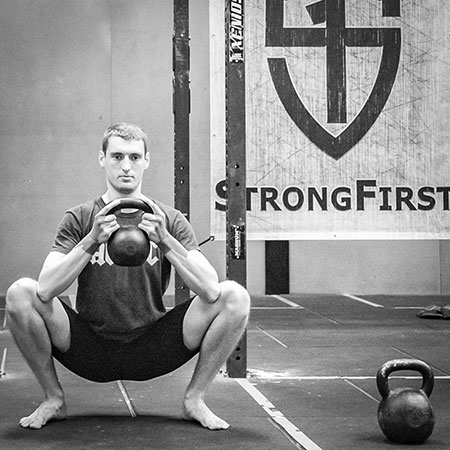
Because I wanted to maintain my proficiency with the get-up at 40kg, I included it in my warmup. It is a great strength and mobility excise that I would highly recommend practicing, even if you have no goals with Simple and Sinister. A few reps won’t hurt, and it will do your body good. I also did this during my Q&D cycles, doing two to three get-ups at 40kg after my Q&D practice.
On Mondays and Fridays, the heavy and medium volume days, I limited my warmup, to save time and to not do too much strength before the higher volumes of C&Js. On low volume Wednesdays, I would sometimes do three warmup sets, depending on how I felt. But I found two warmup sets were enough to prime the body for the C&Js. Stick with two or three sets to maintain more of an A+A protocol.
If you don’t have double kettlebells, or doubles in a weight you can C&J, you could easily do single C&Js; just alternate arms each set/minute. If you can’t/don’t want to do C&Js, this program could still be beneficial. With a well-rounded warmup of squats and get-ups, you could pick your preferred ballistic or semi-ballistic kettlebell exercise and still have an effective program: swing, snatch, clean, clean and press, clean and push press, clean-press-squat, etc.
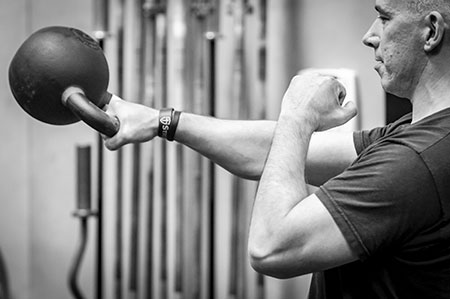
If you are more interested in endurance, you could increase your goal for Mondays. I limited myself to thirty minutes of C&J to keep my exercise short enough to fit into my day, but an A+A session could go longer, up to sixty minutes, if you have the time, and it aligns with your performance goals. If you do go longer, I would definitely keep a waviness in the weekly volume.
Results
When I ran a version of this plan the first time with the double C&J with two 16kg kettlebells, I had completed timeless Simple (32kg). After some cycles of Q&D and A+A, I went back to Simple and Sinister, feeling confident to complete timeless Simple and Sinister with 40kg. In a few months, I completed timeless Simple and Sinister with a 40kg kettlebell. After a Q&D cycle, I did the plan detailed here. Feeling stronger with the double 16kg kettlebells, I was able to do three reps per set and it took me most of the cycle to get to 100 reps (thirty-four minutes). After that, I started alternating three reps at double 16kg, with one rep at double 24kg, for the remainder of that A+A cycle.
I went from double 16kg to double 24kg simply because I don’t have double 20kg. Going from double 16kg to 24kg was very difficult. The combined 24s (48kg) were heavier than my Sinister weight of 40kg, and at first it took me a solid ten to twelve seconds to do one C&J with double 24kg in proper form, and even then, I alternated sets of the 24kg with easier sets of 16kg to recover sufficiently. If you find yourself in similarly significant weight jumps due to gear limitations, I suggest: 1) work your lighter weight until it becomes very easy, and 2) be very cognizant and cautious as you begin to practice the heavier weight.
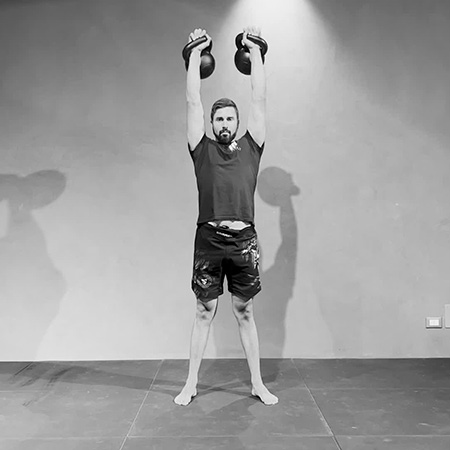
After another six-week cycle of Q&D, I started doing this same A+A cycle, but exclusively with double 24kg. I have found this plan to be an effective long-term cycle of Q&D and A+A that has continued to give me improved strength and conditioning. At the end of this cycle, I will test myself with the C&J for ten minutes to see how many I can do. I have enjoyed both the program listed here, as well as the broader combination of this with Q&D, and plan to continue this long-term cycle with the goal of improving my fitness for the army. At some point, I will get a 44kg and 48kg to achieve Sinister.
Conclusion
When I started this exploration after completing timed Simple, I didn’t know how to continue a long-term program, or even what kind of training to do. Pavel’s Q&D book came out at about the same time, and I immediately gravitated towards it for its use of swings (in line with StrongFirst’s principle of “continuity of the training process”) and pushups (specificity of training for my military requirements). As Q&D pushed me towards A+A and my own experimentations, I had no idea I would end up doing double kettlebell drills, let alone the clean and jerk. Yet my appreciation of minimalism and my increasing time constraints of work and family led me to where I am now: where a practice session of more than thirty minutes seems excessive and practicing more than two or three exercises seems luxurious. It would be nice to have hours a day to really practice and enjoy all the different kinds of exercises and goals, but until then double kettlebell exercises are more efficient and time saving than single kettlebell exercises, and I can’t think of a better all-around, general physical preparedness (GPP) exercise than the double kettlebell clean and jerk.
May you have more time and equipment than me. But if not, may this plan help your strength and sanity.
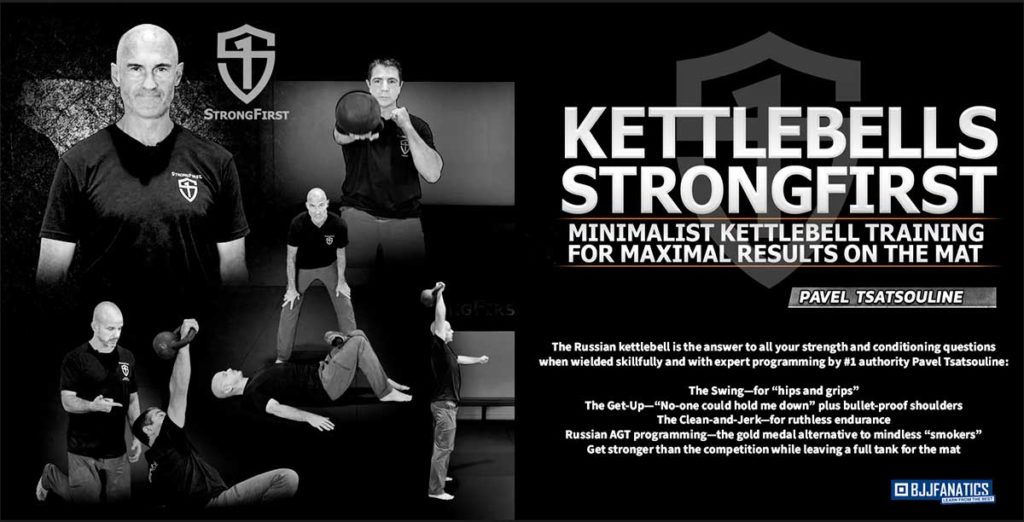
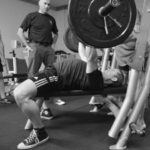

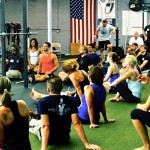
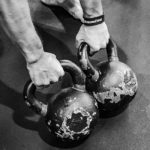


What would you suggest as a mimimum fitness test before starting something like this?
This is in theme of what I’ve failing into.
12ish weeks of KBSF Double C+J progession with 2 additional day at 60% volume.
7-8weeks of Q+D ( I like a ramp up week or two) 4x a week.
Warm up of GS,TGU’s, and pull ups, number of sets based off of the volume of Q+D or KBSF for that day.
This keeps my training at 40mins a day 4x a week.
I worked a program from Pavel that I read online using a one arm C and J, on the minute for the left arm and on the half minute for the right arm. His program used the “talk test” as the governor… can’t talk in complete sentences, your done for the day. After hitting 30 minutes consistently, add a second clean, then later a second jerk aiming for three for a total of 6 in the minute cycle. It worked so good that I was shocked at the results that I got versus the time invested. I did it after several months of Q&D and felt that I lost nothing from that program.
Your program is interesting to me because I like the symmetry of the two-hand lifts plus the extra thrust needed to get the two bells up. I will give it a try on my next cycle (working a Pavel swing/press program now).
FWIW, I’m in my mid to late 60s and these mini programs have allowed me to maintain my fitness level with no real aches and pains so I really am apprehensive for those that devise and post them. Thanks.
Your welcome! I hope it goes well for you!
Thanks for a great article. I’m going to start using this once I get another 28kg bell.
Good luck! I hope it works out well for you!
Hi everyone. I’m Anatoly and I’ve encountered a similar situation. I’m 45 years old , +/- 207lb construction worker , husband ,father of twins and judo and BJJ practitioner..
So minimalist consception was ideal for me .At first I’ve tried A+A with double 48 kg push-press. When I’ve reached 15 sets of 1 push-press on every minute I decided to try something else. I divide my workouts as follows: 1st week Sunday heavy day , double 45 kg kettlebells clean and push-press 1-2-3-4, 1-2-3-4,1-2-3-4 approximately 45 + minutes with bad form . Tuesday, Thursday BJJ. Friday easy day same workout with 32 kg kettlebells clean and push-press, approximately 30 + /- minutes .
Week 2 . Sunday Medium day double 40 kg kettlebells push-press the same workout approximately 40 minutes. Tuesday and Thursday BJJ. Friday easy day the same workout with 32 kg kettlebells clean and push-press.
3rd week rest week only BJJ and on Sunday A+A workout double 48 kg kettlebells clean and push-press OTM. Thanks everyone.
I am also enjoying a longer term plan with The Delorme Inspired Hypertrophy from Beyond Bodybuilding. I usually change my routine after 2 – 4 weeks but the minimalist approach has been fantastic. Interesting that the (very) old school Delorme template is still relevant and most importantly proven. I can certainly attest to that. My numbers go up most weeks!!!
Love it. Thanks for sharing
You’re welcome! Hope it is useful!